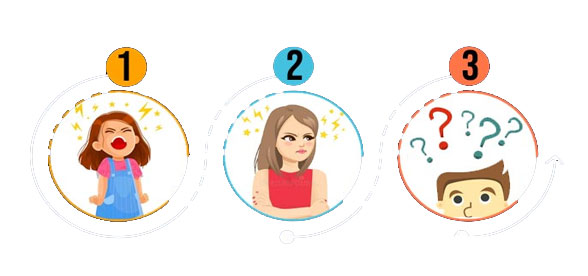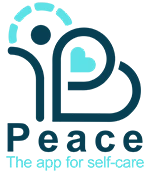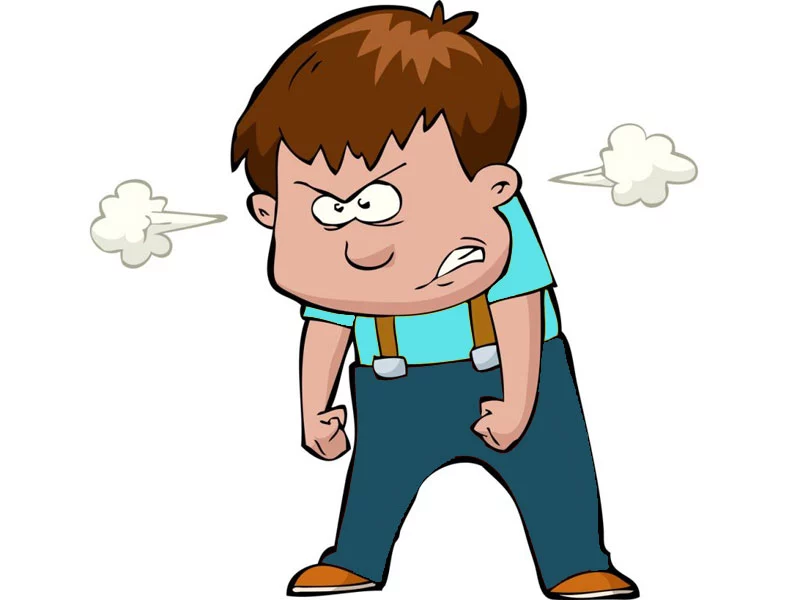
The conduct disorder is a group of behavioral and emotional problems that usually begin during childhood or adolescence. Children and adolescents with this disorder are difficult to observe the laws and social behavior of the community. They may develop offensive, destructive and deceptive behaviors that can violate the rights of others. Adults and other children consider these people to be unfamiliar or delinquent, not as a mental illness..
If your child has a behavioral disorder, it may seem bold and confident. But in reality, children who have behavioral disorder often feel insecure and fear and incorrectly believe that they are in danger of people and consider every factor to be threatening
Symptoms of conduct disorder based on DSM-5
The control of children with conduct disorder is often difficult because they do not want to follow the rules. They are impulsive regardless of the consequences of their actions. Children with conduct disorder do not consider others’ emotions at all and will largely be self -sufficient. If your baby continuously shows one or more of the following behaviors, they may have a conduct disorder:
Aggression toward individuals or animals
- Often bullying and threatening or scared others
- He starts physical fights
- It may use a weapon that can cause severe physical damage to others (such as brick, broken bottle, knife, rifle)
- It oppresses people
- It shows cruelty to animals
The destruction of the property
- It deliberately commits fire to cause serious injury.
- Deliberately destroys the means of others or public property.
Deception or robbery
- He is forced into the house, building or car of others.
- Often lies to get something or benefits or escape their duties.
The serious violation of the regulations
- Without parents’ permission, he stays out of the house at night. This starts before the age of 13
- During his life with real parents or supervisor, he escaped home at least twice at night (or left home for a long time)
- He usually escapes from school and does not want to study.
Uncontrolled conduct in adulthood also causes disturbance of behavior and significantly destroys academic, social or occupational performance. If a person is 18 years old or older, there are no specific criteria for the diagnosis of conduct disorder.
Severity of conduct disorder symptoms in children according to DSM-5
Symptoms of conduct disorder can be mild, moderate, or severe:
Mild symptoms: If your child has mild symptoms, it means that he has few behavioral problems as needed to be diagnosed with a conduct disorder. His behavior problems cause relatively minor injuries to others. Common issues with this group of children include lying, dropping out of school, and staying out after dark without parental permission.
Moderate symptoms: If your child has multiple behavioral problems, he has moderate symptoms. These behavioral problems may have a mild to severe impact on the rights of others. Problems may include multiple vandalism and theft.
Severe symptoms: If your child has most of the symptoms needed to diagnose a conduct disorder, it is severe. These behavioral problems cause significant harm to others. Problems may include trespassing, using a weapon, or breaking and entering someone’s home or car.
Types of conduct disorder
The conduct disorder is categorized into three types of disorder by age that the symptoms of the disorder first appear in individuals :

Childhood Starting
It occurs when symptoms of conduct disorder appear before the age of 5.
Adolescence
: It occurs when symptoms of conduct disorder appear in adolescence.
Unknown start: This means that it is not clear for the first time the symptoms of conduct disorder occurred.
Some children with conduct disorder have limited social emotions, which is usually described. Boys with conduct disorder show more aggressive and destructive behaviors than girls. Girls are mostly violated by deceptive behavior.
How is conduct disorder diagnosed according to DSM-5?
If your child shows signs of conduct disorder, he should be evaluated by a psychologist or psychiatrist. They will ask you and your child about their behavior patterns to make a diagnosis. To be diagnosed with a conduct disorder, your child must exhibit at least three common conduct disorder behaviors. Also, he must have shown at least one of the behaviors in the last six months. The behavior problems you report must be significantly disruptive socially or at school.
1. with limited social feelings
To qualify for this factor, a person must have demonstrated at least two of the following characteristics consistently for at least the past 12 months in multiple relationships. These characteristics should be a pattern that a person shows normally in his interpersonal and emotional relationships, not just to show these behaviors occasionally in some situations.
Therefore, multiple sources of information are required to evaluate the determinants. In addition to the person’s own report, we need to consider the reports of others who have known the person for a long time (eg, parents, teachers, colleagues, family members, peers, and peers or classmates).
2. No remorse or guilt
He does not feel bad or guilty when he commits a mistake (except for the remorse that only appears when he is caught or punished). The person is generally indifferent to the negative consequences of his actions and does not attach importance to what happened. For example, a person does not feel remorse after harming someone or does not care about the consequences of breaking the rules.
3. Insensitivity – lack of empathy
He ignores the feelings of others and is unimportant to him. This person is described as cold and indifferent. He seems to be more concerned about the effects of his actions on himself than on others! Even when his actions lead to significant harm to others.
4. No worries about performance
Does not express concern about poor performance at school, work, or other important activities. A person does not make the necessary effort to perform well, even when expectations and responsibilities are clear. He usually blames others for his poor performance.
5. Deep or incomplete impact
Does not expressed the feeling of others except when they appear increase
Does not express feelings or show feelings to others except when they appear superficial or insincere. For example, actions are inconsistent with expressed feelings; He can quickly turn emotions on or off when it suits him. He uses expressions for profit in emotional situations.


